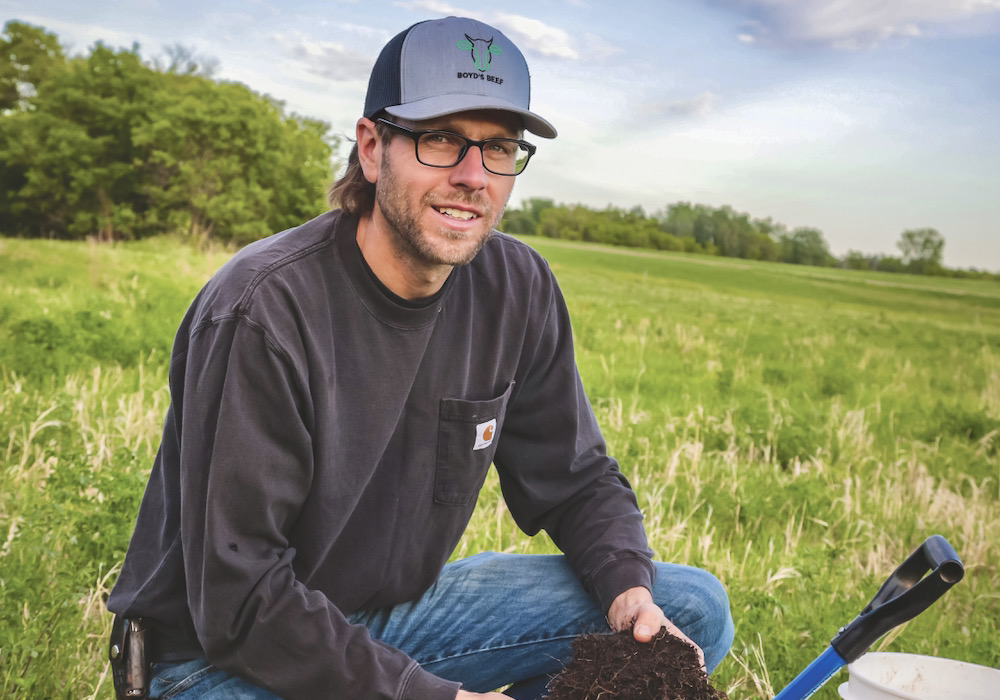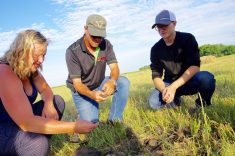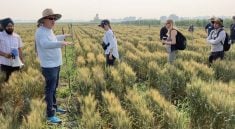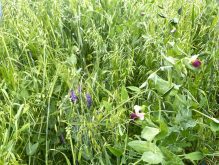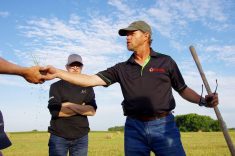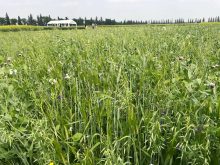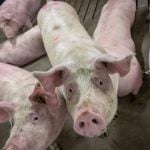Blake Vince adopted a “Field of Dreams” philosophy when he decided to custom graze his cover crops this year — if he builds it, someone will come — so he started fencing and laying out a watering system.
Vince’s farm in southwestern Ontario is a rare breed: a grain operation courting livestock integration.
As a regenerative farmer, Vince figured it was the next step beyond his extensive cover crops — something he had pursued for years to improve soil carbon, water management, nutrient cycling and limit erosion. Livestock, he thought, could help intensify those gains through rotational grazing, while also generating some income.
Read Also

Finally getting paid for sustainable farming?
Alberta project says they might have a line on a workable ecosystem credit model to reward farmers for sustainability, and Manitoba might be next
Why it matters: Advocates say that co-operation between like-minded livestock and grain producers could expand regenerative ag practices, but there are plenty of details that can derail a deal.
There was one problem though. Vince had no cattle of his own — in fact he’d not run cattle since his 4-H days as a youngster. He needed a partner.
Fortunately for Vince, he found one — a producer with a small herd who was willing to let Vince manage the animals how he wanted. The two struck a deal wherein the owner of the cattle would provide mineral, while Vince would take over all care of the animals for $2.40 per head per day.
It’s the type of agreement that regenerative agriculture adherents have long endorsed in theory, but that has rarely happened in practice.

According to Michael Thiele, who coaches about 50 farms through a General Mills program encouraging regenerative practices, that’s starting to change.
He can think of at least three grain farms offhand that have started collaborating with livestock operations.
In some cases, Thiele said, producers have brought in cattle to graze a full-season cover crop. In others, it’s been a multi-year investment, with producers switching land parcels to perennial forage, intending to graze it and return it to annual production in a few years. In other cases, it’s been grazing a fall cover crop.
“For a long time, it was just talk, but the last few years it’s starting to happen,” he said.
Another example, an online directory to match organic grain and livestock producers for exactly this kind of collaboration, is set to launch next year.
That initiative, developed through the Manitoba Organic Alliance (MOA) and Manitoba Forage and Grassland Association, will hopefully help source appropriate fertility for organic producers and cut down on tillage by terminating green manures through grazing, according to the MOA.
“This kind of system, especially the rotational grazing on cover crops, that’s pretty new — well, newish, especially in this area… so I think it’s just a matter of not even thinking about it,” Karen Klassen of the MOA said.
Challenges
Like most things, however, the devil of the deal will be in the details, and it will be farm specific.
Water is among the biggest challenges, according to Thiele. A typical grain operation may have limited surface water, he noted, but bringing livestock onto a field often means some kind of extra water infrastructure, particularly in a drought year.
Another obvious tripping point, of course, is money.
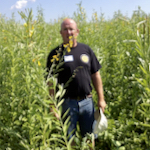
Vince, for instance, admits that the $2.40-per-head-per-day charge may make many Manitoba producers balk, particularly during the summer when feeding cattle is meant to be the cheapest it will be all year.
At the same time, he argued, his deal had cattle out in May, therefore not jumping the gun on turnout and still providing early feed.
“It’s a nice fit if we can graze these overwintering biennials, we can give that pasture, that perennial pasture, a little bit of breathing room when we go into spring,” he said.
Grazing values in his home region are also vastly different than what producers would see in Manitoba.
Cost is also among the limiting factors that Ryan Boyd sees.
The mixed producer from Forrest and former Nuffield Scholar tried out his own collaboration several years ago, sending cattle to graze with an interested grain operation through July and August.
“It’s tough to carve out enough value, in my experience, to make it a win-win situation,” he said.
A lot more attractive, he said, is the idea of a custom grazing when forage is scarce, such as September through November, when producers want to rest pastures anyway. That kind of deal can make use of a lower-valued feed, like residue grazing, he pointed out.
“It all depends on the goals of the farm though,” he added. “In the case of Vince, he sees the value of having that cover crop and he realizes that adding the livestock is going to take his nutrient cycling, the level of biological activity, to the next level. So he’s more willing to focus on the long term than the shorter-term economics.”
Running the numbers
Skyrocketing seed and grain price is another complicating factor.
Higher seed price, of course, may bump costs past the point where the livestock producer sees benefit. At the same time, the chance for $20-per-acre canola on that same field makes cover crops a hard sell for grain producers, Thiele noted.
He argued, however, that input costs are equally astronomical, and fertility and weed control are both something that cattle and cover crops can provide.
“It’s not just what the grain farmer gets in payment for the grazing, it’s also the good things that he may see down the road,” he said.
At some point, the fertility value of that manure may make some of these arrangements more attractive to the grain farmer, he added.
Boyd has also considered that possible shift, although he noted distributing manure more or less evenly requires careful management.
“It has a value,” he said. “Is it equivalent to the fertilizer price? Probably not, but I think we will start to see people thinking that way.”
It is not, he suspects, enough incentive to get big grain farms behind a collaboration, unless they’re already regeneratively inclined.
Foundation for success
The other key, Vince stressed, is trust, and finding a deal that truly does benefit both parties.
Any collaboration must fit with both farms’ production plans.
In his case, cattle were on his land from May to June before the drought-stressed forage couldn’t keep up. After that, he managed to plant and harvest 34 acres of that land in grain corn, while another 34 acres went to a warm-season forage he hoped could be grazed in fall. As it turned out, cattle didn’t return, and that forage mix was taken for seed.
The livestock producer, meanwhile, was able to free up the employee who would normally have been looking after the cattle, and instead put them to work on annual crops in the early season.
But perhaps the biggest litmus test for success, all parties seem to agree, is communication.
Thiele noted that the successful collaborations he’s seen usually involve those who can communicate professionally about what is working, what they need, and what they want to see improved.
“I think you start with, what is the alternative cost?” Boyd suggested. “That might be, what’s it cost me to feed a ration at home whether I’m growing that myself or purchasing feed in? Or what are my pasture grazing costs? What are we comparing to and what are we saving?”
From there, he said, costs like fencing and water can be plugged into the equation.
Vince used a similar economic base to anchor his own negotiations this year.
“Look at the exit strategy before you even start as well,” Vince also advised.
“I was just transparent. When I knew I was running short of feed I wasn’t bashful about that.”
Vince counts his first year with cattle as a success. His fall cover crop provided a lot of biomass that was never grazed, he lamented, and he eventually wants to get his own cattle. But for producers who don’t want to make that sort of jump, he sees collaborations like his last year as a testing ground to try out some of this management, without the commitment of a big capital investment.
“I think the same scenario could happen here, but it’s going to take a willingness of people to see value,” he said.


